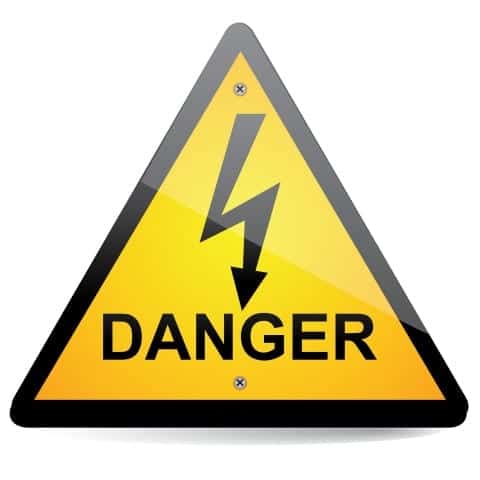Even a brief overview of opioid overdose stats make it clear that the first ninety days of recovery are the most critical for ensuring long-term success in the recovery process. The first step to understanding why this is the case is to understand the symptoms and statistics associated with opioid overdose. From 1990 to 2010, the number of people suffering from opioid dependence around the world increased drastically: from 10.4 million in 1990 to 15.5 million in 2010. Opioid overdose deaths have quadrupled in less than two decades, as has the sale of prescription opioid drugs. Even more specifically, close to 200,000 people have died in the United States as a direct result of overdosing on prescription opioids in the past twenty years. Some of the most common opiates associated with the opioid statistics presented above include:
- Heroin
- Oxycodone (including OxyContin)
- Hydrocodone (including Vicodin)
- Methadone
With the fact that so many people are struggling with an opioid use disorder and the alarming overdose statistics in mind, there is a critical need to find the most effective means of treating this form of addiction. This includes finding effective tools for empowering individuals to recover from opioid dependence altogether.
Opioid Overdose Research Insight
“New data from the Centers for Disease Control and Prevention show that the number of deaths from opioid overdoses continues to rise, reaching more than 33,000 in 2015, the highest number ever recorded. Opioids, which include prescription drugs and illicitly manufactured heroin and fentanyl, accounted for more than 63 percent of all drug-related overdoses that year. These alarming numbers reiterate the need for a holistic, evidence-based approach to address the opioid crisis. Leaders from across the public health field agree that preventing opioid misuse must be a priority. For an estimated twenty million Americans, however, prevention alone is not enough. These individuals need treatment for opioid use disorder, a chronic disease characterized by dependence on opioids in higher and higher doses that puts individuals at risk for overdose and death.”
~ Pew Research Trust
The rising opioid epidemic is particularly troubling given how dangerous opioid abuse can be. Whether using heroin or abusing prescription drugs as their substance of choice, individuals who struggle with addiction are nearly constantly in danger of opioid overdose when using the drug. This is due to a particularly insidious element of opiate drug addiction: the building up of tolerance. Opioid overdose research shows us that as an addict continues to use drugs, they will need increasingly larger dosages of the drug in order to reach the same effects. As these dosages reach dangerously high levels, an individual struggling with addiction face an increased risk of a drug overdose and even death as a result.
“In many countries, the number of deaths attributable to opioid use is substantial and increasing in some, such as the US, where deaths from opioid overdose now outnumber gun-related deaths in the country. Overdoses are preventable causes of death warranting wide implementation of preventive interventions. Methadone and probably buprenorphine reduce mortality among people dependent on opioids. Policymakers, clinicians, and those responsible for drug treatment systems should work to ensure the availability of such treatment, remove access barriers, and promote engagement.”
~ Luis Sordo and associates, in a recent BMJ article
What to Look for: Symptoms of Opioid Overdose
Of course, all of this information is irrelevant unless you know how to recognize the signs of an overdose when they occur. Some of the most prevalent symptoms of opioid overdose include:
- Acting confused, delirious or drunk
- Exhibiting extreme mood swings
- Experiencing nausea
- Vomiting
- Constipation
- Having problems breathing (either rapid or slowed breathing)
- Blue skin, lips, or fingernails
- Extremely small pupils (appearing as pinpoints)
- A weak pulse
- Loss of consciousness and acting unresponsive
- Lowered blood pressure
- Acting disoriented
If you see any of these signs of an overdose in someone you know, you should call 911 or get them to an emergency room immediately. The only way to recover from opioid overdose is to get professional help as soon as possible.
Recovering from Opioid Overdose: Why the First 90 Days of Recovery?
The reason the first ninety days of recovery are so important can be highlighted by one major insight from opioid research: eighty percent of heroin users first abused prescription opioids before turning to illicit heroin. This opioid statistic alone shows the true nature of addiction. Once an opioid use disorder takes hold, users will do nearly anything to get their hands on a substance that can give them the same effects. Opioid addicts may continue to fight off cravings for years, but the first few weeks of addiction treatment can get them on the right path for long-term recovery.
“It is a painful, uncomfortable process to have an overdose reversed, so it’s not an experience people will want to endure repeatedly. If we can keep people alive, it gives them an opportunity for recovery.”
~ Elisha Figueroa, Director of the Idaho Office of Drug Policy
The opioid overdose stats discussed above may not paint a very hopeful picture when it comes to the effects of the drug, but it is important to understand that experiencing an overdose does not mean that drug addiction itself cannot be dealt with. Instead, an overdose from heroin or prescription opioids is a primary sign that opiate addiction recovery is needed. It is a kind of wake up call. This is where the first ninety days of recovery come in. The first ninety days of recovery are the most critical for recovering from opioid overdose and overcoming opiate drug addiction altogether because this period is the benchmark for retention in the recovery process. In other words, once someone has completed ninety days of recovery – whether medically managed recovery or an intensive outpatient program – they are considered to have ‘finished’ addiction treatment. While there are usually still months, or even years, ahead in the recovery process, completing this initial stage makes it much more likely that relapse will be avoided and opioid overdose will not happen again. These first few weeks and months of recovery are usually associated with an intensive treatment designed to help those struggling with addiction to face it head-on. Some of the most common approaches during these first ninety days include:
- Detoxification: In the first few days of recovery, those dependent on opiates or prescription opioids will experience withdrawal symptoms. Medical detox allows patients to go through this process in a safe and supportive environment.
- Intensive Outpatient Treatment: These drug rehab programs allow patients to keep up on their responsibilities at home and at work while simultaneously getting the counseling and group support that they need for recovery.
- Pharmacotherapy: In some extreme cases, treatment centers will use medications to help manage cravings and withdrawal symptoms during the first ninety days of treatment.
- Behavioral Therapies: This is one-on-one counseling designed to let patients get to the bottom of the social and psychological effects of their addiction.
- Support Groups: Both intensive outpatient programs and external groups (like Narcotics Anonymous) give those in recovery the opportunity to process their addiction and develop coping strategies in a supportive environment.
Moving Forward: Getting Help for Recovering from Opiate Addiction Recovery
The main takeaway from this post is that any form of drug rehab and addiction recovery is a process. Recovering from opioid overdose cannot be accomplished overnight. Instead, opiate addiction recovery requires undergoing days of withdrawal symptoms during opioid detox treatment, weeks of intensive treatment during drug rehab, and months (or even years) of fighting cravings and getting social support during long-term recovery. Do not let the opioid overdose statistics and symptoms of an opioid overdose be discouraging if you find that you are suffering from opioid use disorder. Instead, let this post be a wakeup call to get the help that you need to recover – particularly during the first ninety days of recovery. If you would like more information about opioid overdose stats or why the first ninety days of recovery are the most critical to recovering from an opioid overdose, you should feel free to contact us today.
Sources:
Centers for Disease Control and Prevention. (2016, December). Prescription Opioid Overdose Data. Retrieved from: https://www.cdc.gov/drugoverdose/data/overdose.html Luis Sordo. (2017, April). Mortality Risk During and After Opioid Substitution Treatment: Systematic Review and Meta-Analysis of Cohort Studies. Retrieved from: https://www.bmj.com/content/357/bmj.j1550 Pew Research. (2016, December). U.S. Opioid Overdose Deaths Reach Record Highs. Retrieved from: https://www.pewtrusts.org/en/research-and-analysis/analysis/2016/12/30/us-opioid-overdose-deaths-reach-record-highs Shane Darke and Wayne Hall. (2003). Heroin Overdose: Research and Evidence-Based Intervention. Retrieved from: https://www.ncbi.nlm.nih.gov/pmc/articles/PMC3456279/pdf/11524_2006_Article_206.pdf




